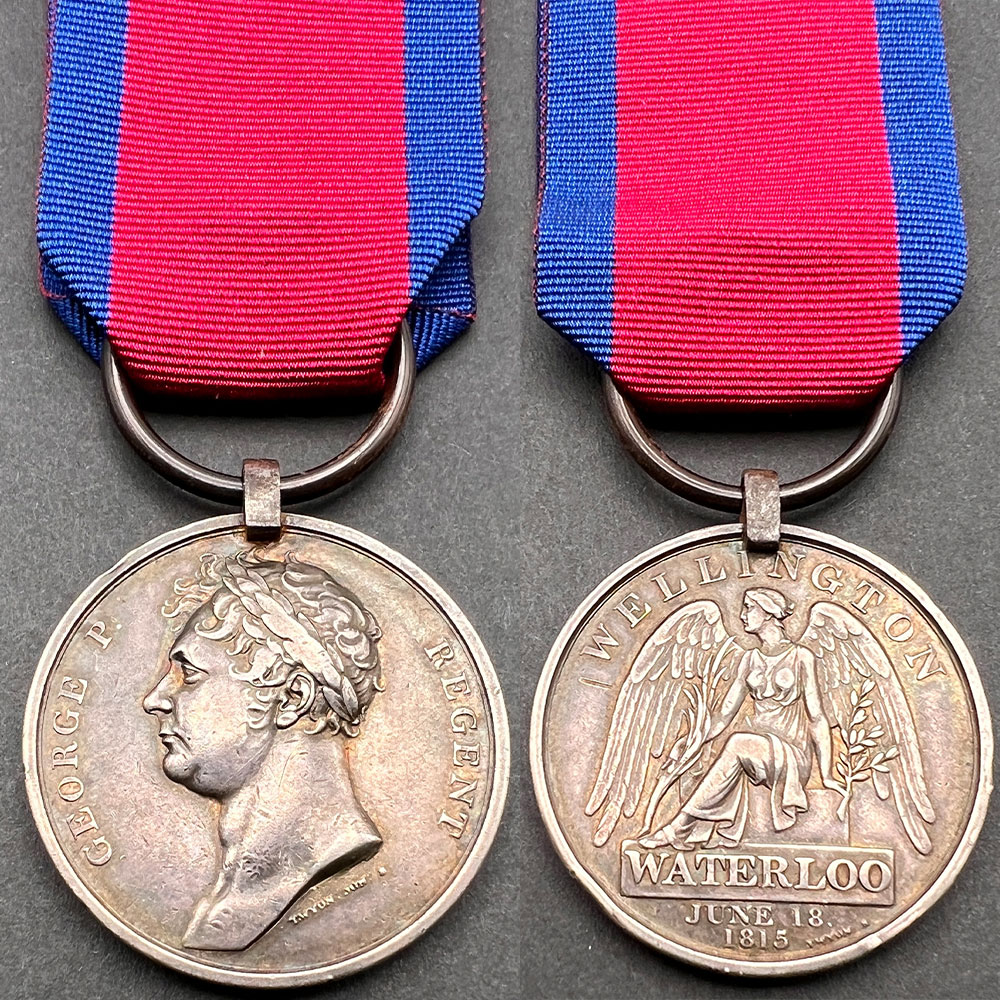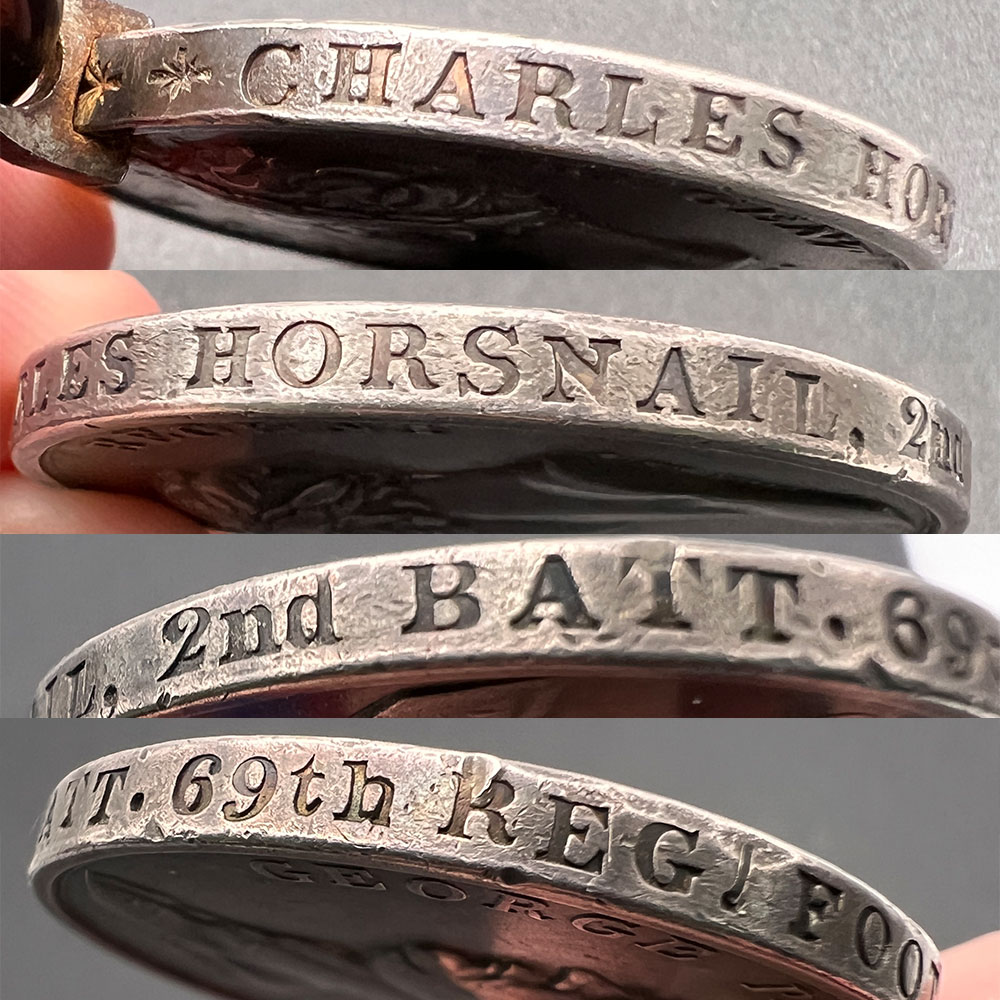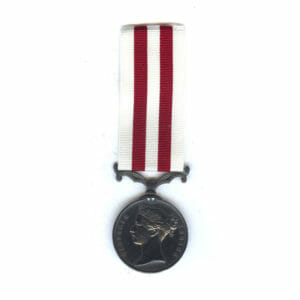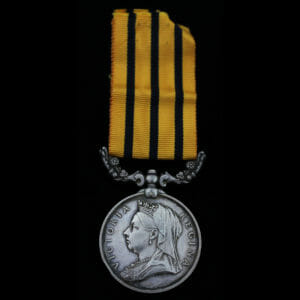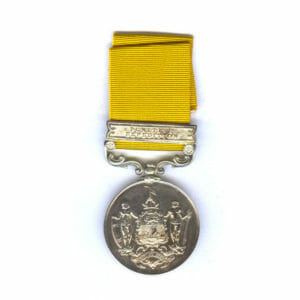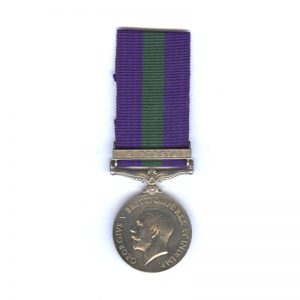Description
Waterloo Medal, 18th June 1815, Private Charles Horsnail, 2nd Battalion 69th Regiment of Foot, Served in Captain Sir William Curzon’s Company, who took heavy casualties.
Officially impressed with stars to fill the gaps as usual: “** CHARLES HORSNAIL, 2nd BATT, 69th REG FOOT. **”
Particularly well preserved condition for a Waterloo Medal.
Confirmed on the transcribed medal roll and the Royal Mint’s original hand-written Waterloo Medal Book.
During the Battle of Waterloo, he served as part of the 2nd 69th’s Number 8 Company, under Captain Sir William Curzon. (Capt Curzon would gain himself a role as Deputy Assistant Adjutant General during the day, in which role he was Killed in Action).
A breakdown of the company’s strength, courtesy of Napoleon-Series.org where Martin Aaron recalls in detail the men of the 69th at the battle, notes that Charles was one of about 55 men in the company, by the end of the Battle, 23 had become casualties, 42% of their Company.
You can click here to read more: https://www.napoleon-series.org/military-info/organization/Britain/Infantry/c_2-69Waterloo.html
At Quatre Bras and Waterloo, the 2nd 69th South Lincolnshire Regiment of Foot, fielded about 568 men in total, with 229 becoming casualties, coming to 41% of their number.
During the battle their Commanding Officer, Lieutenant Colonel Charles Morice, was killed in action, being the recipient of 4 French Musket Balls.
A number of the Killed in Action men from this company were Killed at Quatre Bras, the battle one day before Waterloo.
At Quatre Bras, on 17th June, the rather inexperienced 2nd 69th Foot were caught off guard still trying to form their square by the French Cuirassiers, leading to many casualties.
The fact they were still failing to form their square was blamed on the poor Prince of Orange, who had apparently overruled the order to form into squares. It was later understood some years afterwards that a Captain Lindsay of the 69th had been the cause of the issue.
The 69th had no idea what was coming, as they were standing in a field of rye, so high that they could barely see in the distance, by the time they say them the French Cuirassiers rode right through them.
Without the rescue from the “Guards” as recorded in a letter “Not a man save the Colonel and Adjutant (who were fortunate to be mounted) would have escaped.”
The Guards with some volleys sent the Curassiers back into the woods, leaving 27 of the 69th killed on the day.
Martin Aaron in his paper for Napoleon Series paints a grim picture of the regiment:
“The experience of the men in the 69th (South Lincolnshire) Foot at Quatre Bras was undoubtedly a horrific one – youngsters stumbling through the rye in terror whilst the big cavalrymen in armour hunted them down, slashing downwards with their sabres. However, a study of the casualty lists shows that the “annihilation of the 69th at Quatre Bras” is one of many myths surrounding the battle.”
They then fought at the famous Battle of Waterloo the next day.
His brigade was part of the Allied Line between La Haye Sainte and Hougoumont, following their casualties the previous day at Quatre Bras, the four regiments of the brigade were combined together, the 30th, 73rd, 33rd and 69th.
They fought hard in the squares, the 69th Square being combined with the 33rd Foot, it was noted that their neighbours the 30th and 73rd, fighting in a square next to them fared a lot better against the French Attacks.
Morris of the 73rd wrote of the 69th: “The square next to use, was charged at the same time, and were unfortunately broken into and retired in confusion, followed by the Cuirassiers, but the Life Guards coming up, the French in their turn, were obliged to retrogade, and the 33rd and 69th resumed their position, in square on our right, and maintained it during the rest of the day.”
